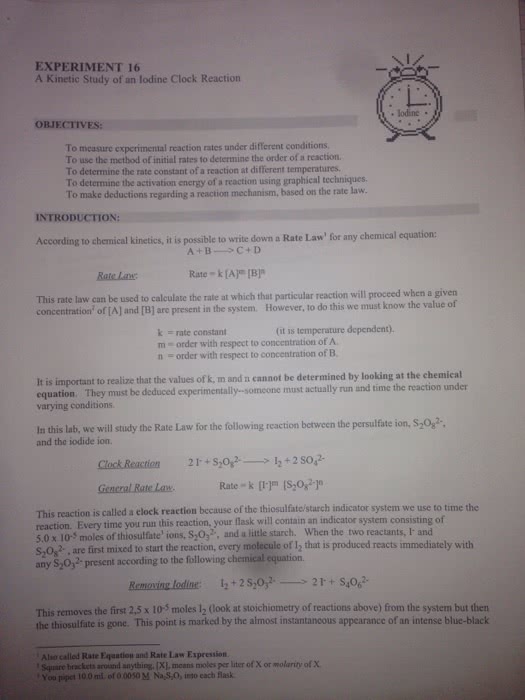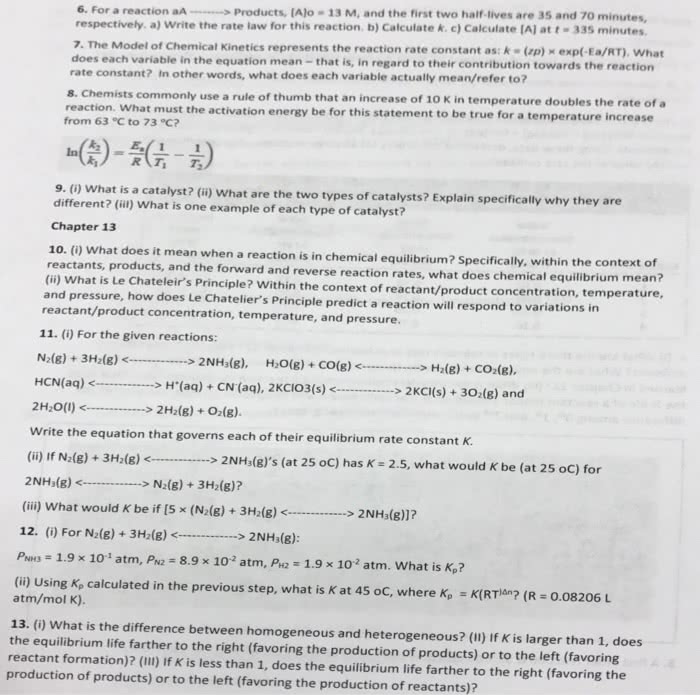CHM 11600 Lecture 2: Methods of Rates
40 views2 pages
25 Mar 2015
School
Department
Course
Professor
Document Summary
Chm 11600 - general chemistry - lecture 2_methods of rates. Method of instantaneous rates: general form of rate law. Evaluate relationships between rate/concentration and to determine order. If [h2o2] is doubled and rate is doubled, k[h2o2]1. If [h2o2] is quadrupled and rate is quadrupled, k[h2o2]2. If [h2o2] is increased by a factor of 8 and rate is increased by a factor of 8, k[h2o2]3. 2. 31*10-5 m/s = k[0. 500m] k = 4. 62*10-5s-1 = kavg. Relationship between rate of disappearance of reactants and rates of appearance of products: [h2o2] / t = [h2o] / t = 2(+ [o2] / t ) Perform several experiments with different concentrations of reactants. Advantage: method works for reversible chemical reactions. 0. 050 aa + bb dd + ee. Rate = -(1/a) [a] / t = -(1/b) [b] / t =(1/c) [c] / t =(1/e) [e] / t. Rate law (only includes reactants) ie. a b + c.
Get access
Grade+
$40 USD/m
Billed monthly

Homework Help
Study Guides
Textbook Solutions
Class Notes
Textbook Notes
Booster Class
10 Verified Answers
Class+
$30 USD/m
Billed monthly

Homework Help
Study Guides
Textbook Solutions
Class Notes
Textbook Notes
Booster Class
7 Verified Answers

